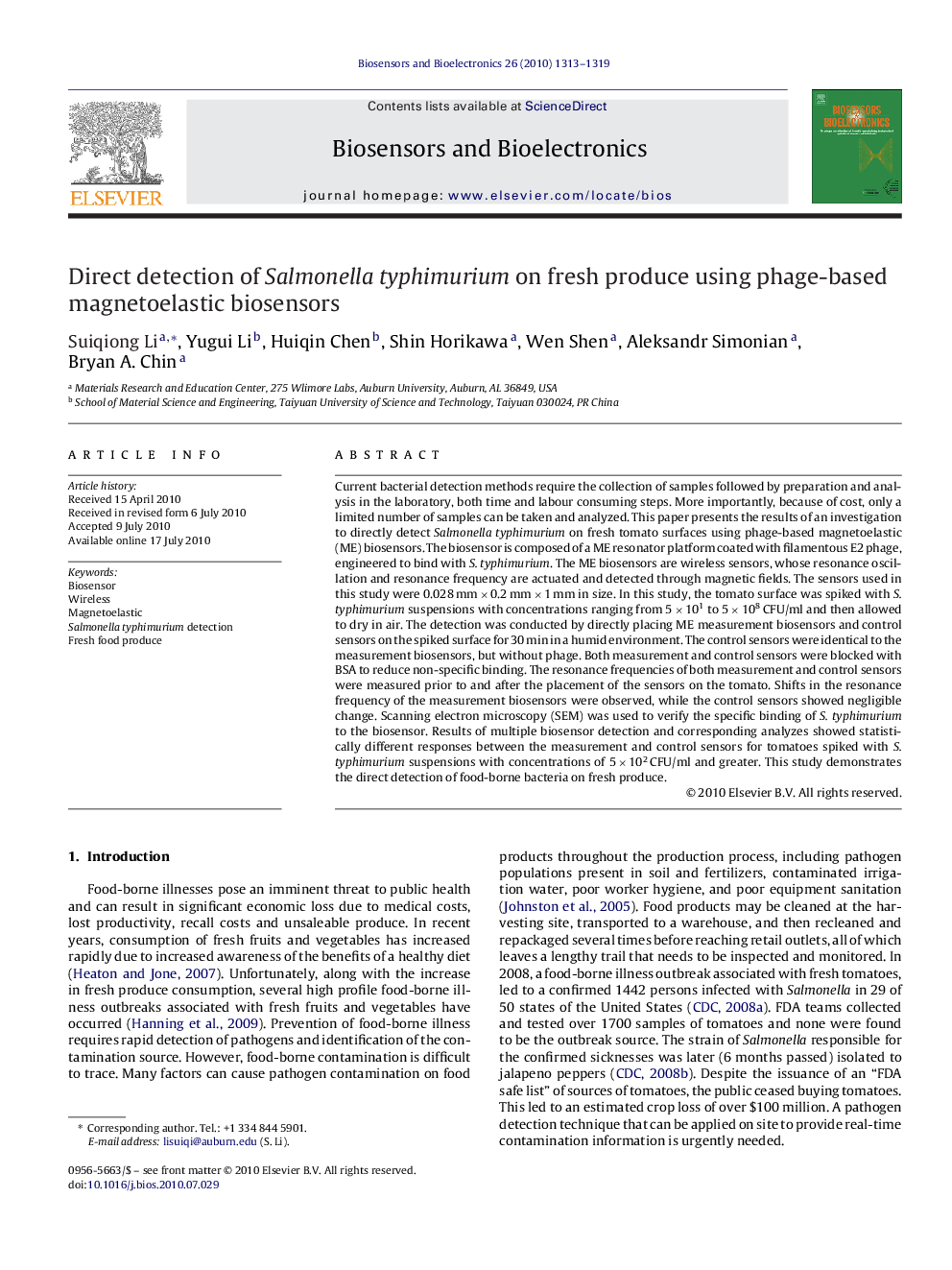| Article ID | Journal | Published Year | Pages | File Type |
|---|---|---|---|---|
| 868407 | Biosensors and Bioelectronics | 2010 | 7 Pages |
Current bacterial detection methods require the collection of samples followed by preparation and analysis in the laboratory, both time and labour consuming steps. More importantly, because of cost, only a limited number of samples can be taken and analyzed. This paper presents the results of an investigation to directly detect Salmonella typhimurium on fresh tomato surfaces using phage-based magnetoelastic (ME) biosensors. The biosensor is composed of a ME resonator platform coated with filamentous E2 phage, engineered to bind with S. typhimurium. The ME biosensors are wireless sensors, whose resonance oscillation and resonance frequency are actuated and detected through magnetic fields. The sensors used in this study were 0.028 mm × 0.2 mm × 1 mm in size. In this study, the tomato surface was spiked with S. typhimurium suspensions with concentrations ranging from 5 × 101 to 5 × 108 CFU/ml and then allowed to dry in air. The detection was conducted by directly placing ME measurement biosensors and control sensors on the spiked surface for 30 min in a humid environment. The control sensors were identical to the measurement biosensors, but without phage. Both measurement and control sensors were blocked with BSA to reduce non-specific binding. The resonance frequencies of both measurement and control sensors were measured prior to and after the placement of the sensors on the tomato. Shifts in the resonance frequency of the measurement biosensors were observed, while the control sensors showed negligible change. Scanning electron microscopy (SEM) was used to verify the specific binding of S. typhimurium to the biosensor. Results of multiple biosensor detection and corresponding analyzes showed statistically different responses between the measurement and control sensors for tomatoes spiked with S. typhimurium suspensions with concentrations of 5 × 102 CFU/ml and greater. This study demonstrates the direct detection of food-borne bacteria on fresh produce.
